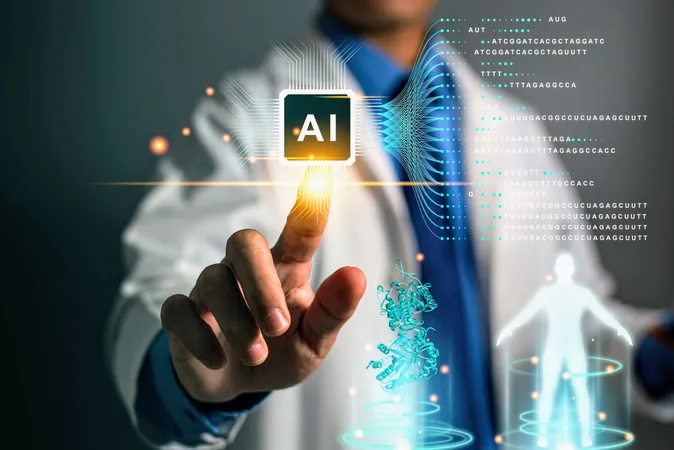
Breakthrough AI Tool Unraveling DNA Knots Could Revolutionize Health Predictions
2025-08-27
Author: Wei
In a groundbreaking advancement in biophysics, researchers have created a sophisticated AI tool that visualizes DNA's intricate knots—critical structures that can be either beneficial or detrimental to cellular function. For years, scientists have grappled with the chaotic realities of DNA, moving past the simplistic ladder-like structure traditionally taught.
Unveiling DNA's Hidden Connections
Led by Professor Alice Pyne from the University of Sheffield, the research harnesses high-resolution imaging coupled with intelligent software to reveal the complex crossings of DNA strands. This innovative method dramatically accelerates the visualization process, yielding results in moments that once took hours, allowing scientists to clearly see which strand of DNA weaves over or under another.
The Power of Atomic Force Microscopy
Using atomic force microscopy (AFM), the team mapped DNA without any staining, replicating natural cellular conditions. This technique excels in capturing the minutiae of single molecules in fluid environments. By measuring height profiles at DNA crossings, researchers increased accuracy in determining strand positions, a crucial step for understanding the impacts of DNA structure on gene expression.
Understanding DNA Knots and Disease
DNA's topology—its spatial arrangement—plays a vital role in gene access and genome integrity. Imbalances in DNA structure can lead to serious damage, challenging cellular repair systems. This research connects molecular structures to real-world health implications, revealing how mismanaged twists during DNA replication could lead to diseases, including cancer.
Testing the AI Tool's Precision
To affirm the software's reliability, the researchers conducted tests on replication intermediates from Xenopus egg extracts, a system mimicking DNA synthesis outside the cell. They also engineered specific knots in bacteria, demonstrating the software's capability to accurately identify and measure these complex structures with impressive precision.
Visualizing Complex Structures with Ease
The biggest challenge in visualizing DNA entanglement is distinguishing which strand is on top at crossings. The innovative AI model leverages subtle height differences at junctions to effectively track pathways, allowing for a clearer understanding of these tangled molecules.
Implications for Drug Development and Nanotechnology
This classifying ability not only aids in drug discovery by providing insights into how compounds influence DNA processing but also opens avenues in DNA nanotechnology. With the potential to manipulate DNA structure intentionally, this research could innovate how we design new therapeutic agents.
Future Prospects in Molecular Biology
Despite the challenges posed by atomic force microscopy, this new pipeline drastically minimizes observer bias and transforms complex biological structures into quantifiable data. The implications of this advancement extend beyond DNA; similar approaches could eventually be adapted for RNA, protein interactions, and engineered DNA constructs, pushing the boundaries of how we study molecular biology.
Published in *Nature Communications*, this research marks a significant step forward in the quest to understand DNA's role in health and disease, promising to reshape the future of genetic research.
 Brasil (PT)
Brasil (PT)
 Canada (EN)
Canada (EN)
 Chile (ES)
Chile (ES)
 Česko (CS)
Česko (CS)
 대한민국 (KO)
대한민국 (KO)
 España (ES)
España (ES)
 France (FR)
France (FR)
 Hong Kong (EN)
Hong Kong (EN)
 Italia (IT)
Italia (IT)
 日本 (JA)
日本 (JA)
 Magyarország (HU)
Magyarország (HU)
 Norge (NO)
Norge (NO)
 Polska (PL)
Polska (PL)
 Schweiz (DE)
Schweiz (DE)
 Singapore (EN)
Singapore (EN)
 Sverige (SV)
Sverige (SV)
 Suomi (FI)
Suomi (FI)
 Türkiye (TR)
Türkiye (TR)
 الإمارات العربية المتحدة (AR)
الإمارات العربية المتحدة (AR)